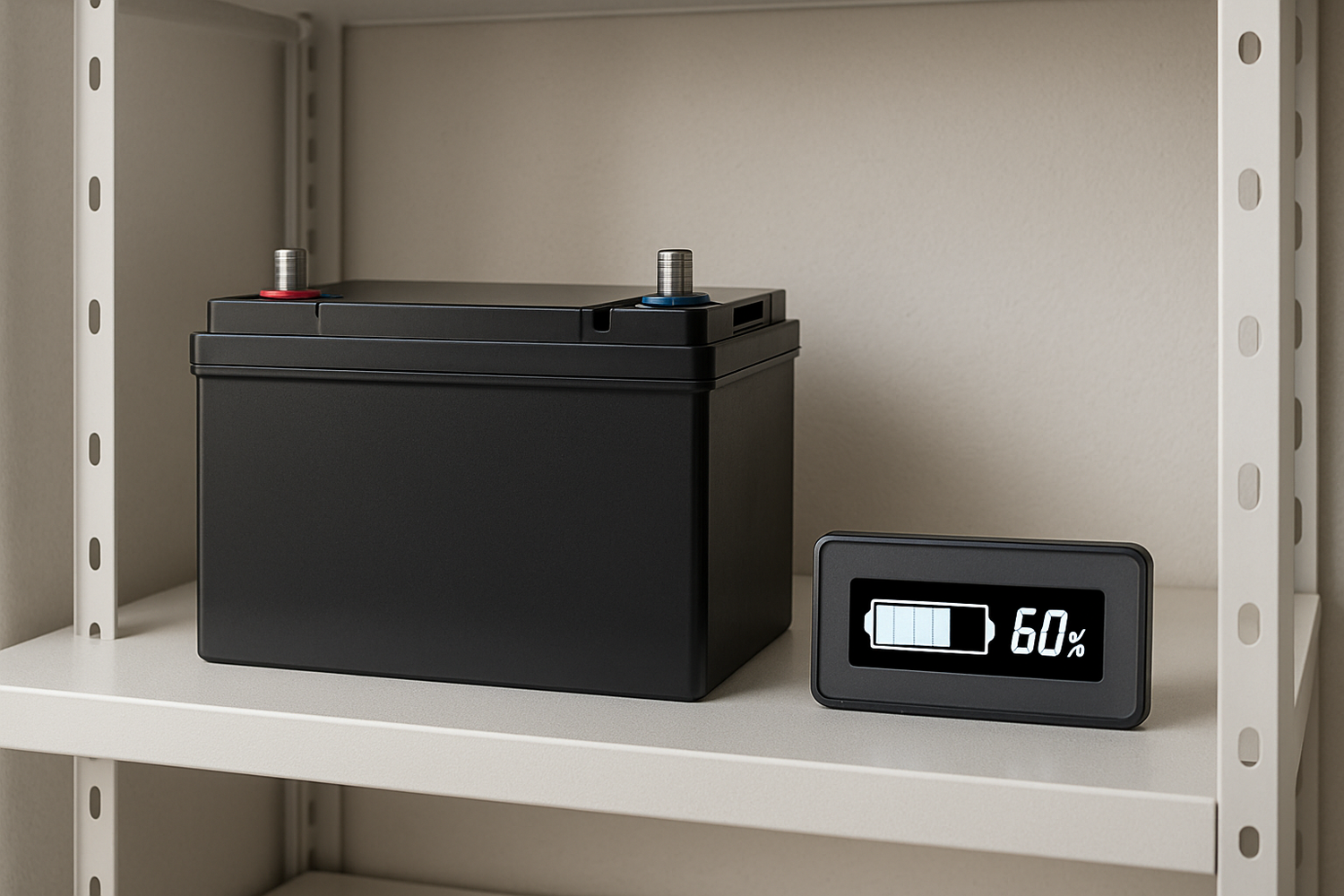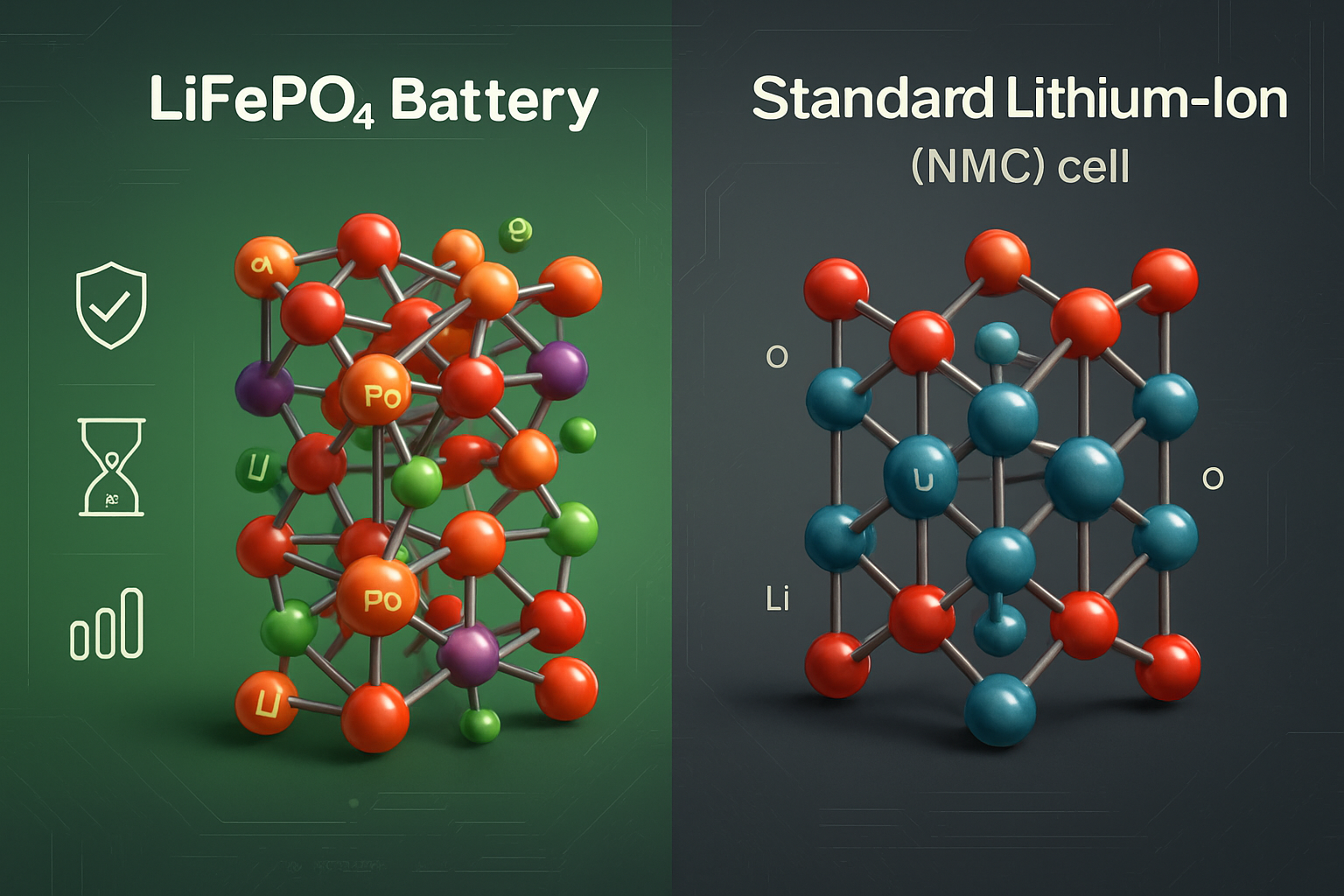Lithium Iron Phosphate (LiFePO4) batteries are a cornerstone of modern renewable energy storage solutions, prized for their safety, stability, and long cycle life. To get the most out of your investment, understanding how to properly store them for extended periods is essential. Proper LiFePO4 battery long-term storage preserves capacity, extends lifespan, and ensures your system is ready when you need it. These seven professional tips will guide you through the best practices for battery maintenance and storage.
Understanding LiFePO4 Chemistry Fundamentals
The unique chemistry of LiFePO4 batteries is what gives them their advantages, but it also dictates specific storage requirements. Unlike other lithium-ion variants, their structure is more robust, making them less prone to thermal runaway. However, like any energy storage device, their health is directly impacted by how they are treated during periods of inactivity.
Why Storage Conditions Matter for Longevity
Improper storage can lead to irreversible capacity loss, reduced efficiency, and a shortened lifespan. The primary goal of long-term storage is to slow down the natural aging process of the battery cells. This involves managing the state of charge, temperature, and physical environment to minimize stress on the internal components.
Key Differences from Other Lithium-ion Batteries
Compared to chemistries like NMC or LCO found in many consumer electronics, LiFePO4 batteries have a lower nominal voltage and a flatter discharge curve. They are also less sensitive to being held at a high state of charge, but they are not immune to degradation. Their self-discharge rate is remarkably low, making them ideal for storage, provided the correct conditions are met.
Tip 1: Target the Ideal State of Charge (SoC)
One of the most critical aspects of LiFePO4 charge management for storage is the initial state of charge. Leaving a battery fully charged or completely empty for months can cause significant harm.
The 50-80% Sweet Spot
For long-term storage (over three months), aim for a state of charge between 50% and 80%. This range minimizes stress on the battery's cathode and anode, slowing the rate of chemical degradation. It provides enough energy to prevent the battery from self-discharging to zero while avoiding the strain associated with a full charge.
Dangers of Storing at 100% or 0%
Storing a LiFePO4 battery at 100% SoC accelerates calendar aging, leading to permanent capacity loss. Conversely, storing it at 0% is even more dangerous. The battery's low self-discharge rate can eventually drop the voltage to a critical level, risking deep discharge. This can damage the internal cell structure, potentially rendering the battery unusable.
Tip 2: Control the Storage Environment
The physical environment plays a massive role in battery health. Temperature and humidity are the two main factors you need to control for effective energy storage.
Temperature: The Critical Factor
Temperature is the single most influential factor in a battery's aging process. The ideal storage temperature for a LiFePO4 battery is between 5°C and 25°C (41°F and 77°F). Storing batteries in a hot garage or in direct sunlight will drastically accelerate degradation. Cold temperatures are less damaging for storage but can affect performance upon reactivation.
| Storage Temperature | Typical Annual Capacity Loss (at 50% SoC) |
|---|---|
| 0°C (32°F) | ~1-2% |
| 25°C (77°F) | ~3-5% |
| 40°C (104°F) | ~10-15% |
| 60°C (140°F) | >25% |
Humidity and Ventilation Considerations
Store your batteries in a dry, well-ventilated area. High humidity can lead to corrosion on the terminals and other metallic components. Good ventilation prevents the buildup of any potential off-gassing, although this is extremely rare with LiFePO4 chemistry under normal conditions.
Tip 3: Disconnect and Isolate the Battery
Before placing a battery into storage, it is crucial to completely disconnect it from any loads or charging sources. This prevents slow, unnoticed power drain that can deplete the battery over time.
Preventing Parasitic Drain
Even when turned off, devices like inverters, charge controllers, or the battery's own monitoring system can draw a small amount of power. This is known as parasitic drain. Over several months, this can be enough to completely discharge the battery, leading to the risks mentioned earlier. Physically disconnecting the main positive and negative terminals is the only way to be certain there is zero drain.
Physical Isolation for Safety
Isolating the battery also adds a layer of safety. It prevents accidental short circuits and ensures the battery cannot be unintentionally activated. Place protective caps on the terminals if available and store the battery away from flammable materials or metal objects that could cause a short.
Tip 4: Implement a Regular Maintenance Cycle
Long-term storage is not a 'set it and forget it' process. A simple, periodic check-in is a key piece of battery maintenance that ensures the battery remains in optimal condition.
Periodic Voltage Checks
Every 3 to 6 months, check the battery's voltage with a reliable multimeter. This quick check confirms that the self-discharge rate is within the expected range and that the battery is not approaching a dangerously low voltage level. For a 12V LiFePO4 battery, the storage voltage should remain well above 12.8V.
The Occasional Refresh Charge
If you notice the voltage has dropped significantly (e.g., below 30-40% SoC), it is wise to perform a brief 'refresh' charge. This does not mean charging it to 100%. Instead, charge it just enough to bring it back into the ideal 50-80% SoC storage window. This simple step can dramatically extend the battery's service life.
Tip 5: Preparing for Re-activation
When the time comes to take your battery out of storage and put it back into service, a proper wake-up procedure will ensure a smooth transition and optimal performance.
Gradual Wake-up Process
Before connecting the battery to a heavy load, it's best to wake it up gently. Start by connecting it to a compatible LiFePO4 charger. This allows the Battery Management System (BMS) to activate and balance the cells properly. Avoid immediately demanding high power from a battery that has been dormant.
Perform a Full Cycle
For best results, perform one full charge and discharge cycle before integrating the battery back into your main system. Charge it to 100%, then discharge it under a moderate load to about 20%, and finally, charge it back to 100%. This helps recalibrate the BMS's SoC readings and confirms all cells are performing as expected.
A Forward-Looking Perspective on Battery Storage
Following these energy storage tips ensures that your LiFePO4 battery delivers the performance and longevity you expect. Proper care is fundamental to leveraging the full potential of your home energy storage system and achieving greater energy independence. The role of battery energy storage systems is expanding rapidly. As noted in the IEA report, The Power of Transformation, storage technologies are perfectly suited to complement the variability of renewable energy sources. They create demand during periods of abundance and provide supply during scarcity.
Effective storage not only preserves your hardware but also contributes to a more stable and efficient energy grid. Research from IRENA's Electricity Storage Valuation Framework highlights how electricity storage can replace peaking plants, saving costs and reducing emissions. Your well-maintained battery is part of this larger technological shift. Furthermore, ongoing innovation is critical. The IEA's The State of Energy Innovation report points to the continuous development in battery technologies to diversify supply chains and unlock longer storage durations. For a detailed analysis of how these practices influence system efficiency, a comprehensive understanding of the metrics of solar storage performance is highly beneficial. By adopting a professional approach to LiFePO4 battery storage, you are ensuring the resilience and reliability of your personal energy solution.
Frequently Asked Questions
How long can I store a LiFePO4 battery?
With proper preparation and periodic maintenance, a LiFePO4 battery can be stored for up to 1-2 years without significant degradation. The key is to maintain the correct state of charge and a stable, cool environment.
Do LiFePO4 batteries lose charge in storage?
Yes, all batteries self-discharge over time. However, LiFePO4 batteries have a very low self-discharge rate, typically around 1-3% per month. This is significantly lower than older battery chemistries, making them excellent for long-term storage.
Is it better to store a LiFePO4 battery fully charged or empty?
Neither. Storing it fully charged (100%) or empty (0%) is harmful. The optimal state of charge for long-term storage is between 50% and 80%. This minimizes stress on the cells and preserves the battery's overall health and capacity.





Leave a comment
All comments are moderated before being published.
This site is protected by hCaptcha and the hCaptcha Privacy Policy and Terms of Service apply.